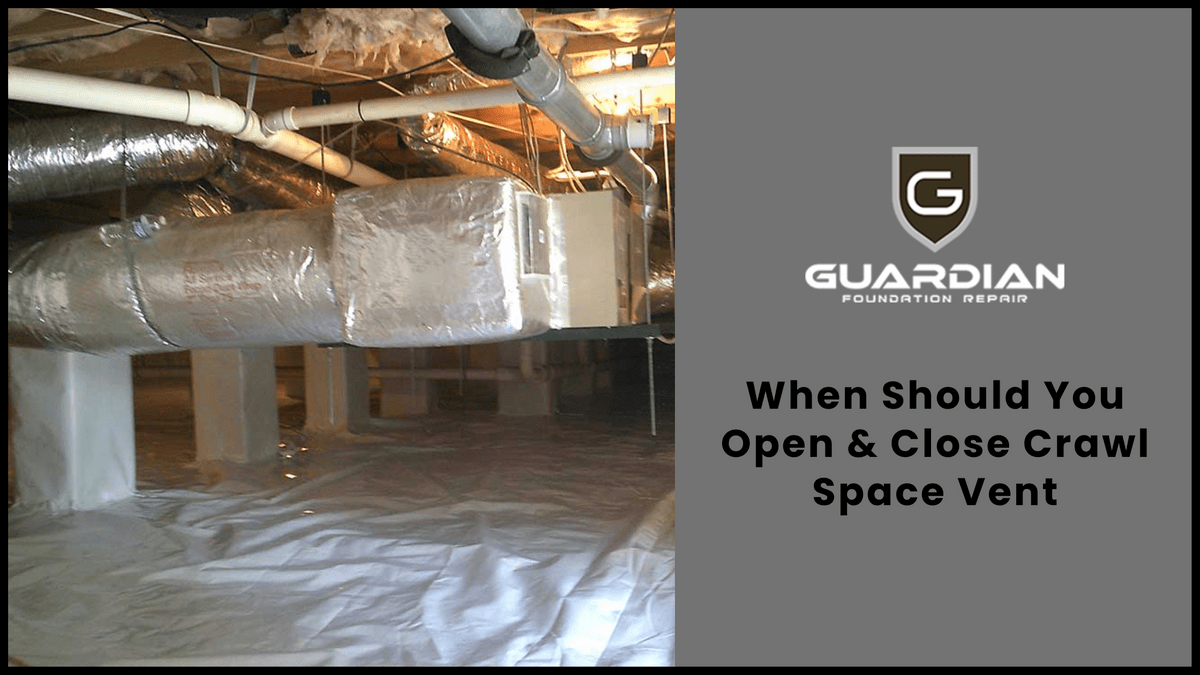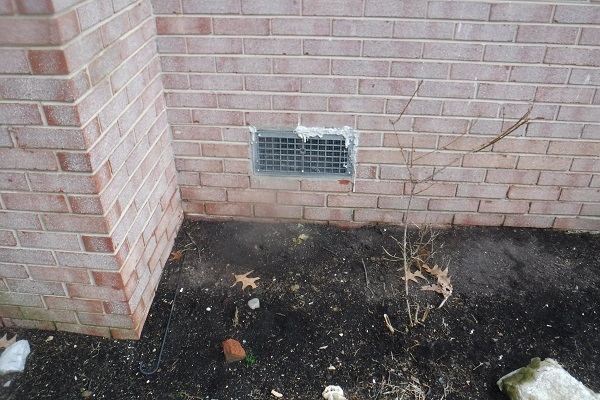When To Open Crawl Space Vents

Crawl Space Ventilation: When to Open and Close Those Vents for Maximum Energy Savings
Crawl spaces – the often-forgotten areas beneath our homes – can significantly impact energy bills and indoor air quality. Understanding when to open and close crawl space vents is crucial for optimizing energy efficiency, preventing moisture problems, and ensuring a healthy living environment. This article will delve into the complexities of crawl space ventilation, providing practical advice for homeowners, businesses, and HVAC professionals alike.
The Great Ventilation Debate: Traditional vs. Modern Approaches
Traditionally, crawl space ventilation was believed to be essential for removing moisture and preventing wood rot. The thinking was simple: open vents in the summer to allow air circulation and close them in the winter to keep cold air out. However, modern building science has challenged this approach. Research indicates that in many climates, open vents can actually increase moisture levels in crawl spaces, especially during humid summer months.
The reason? Warm, humid air entering a cooler crawl space can condense on surfaces, leading to condensation, mold growth, and wood decay. This is especially problematic in areas with high humidity, like the southeastern United States.
Understanding the Hygrothermal Environment of Your Crawl Space
The key to proper crawl space ventilation lies in understanding the hygrothermal environment - the relationship between temperature and humidity - within your crawl space. Factors influencing this environment include:
- Climate: Geographic location significantly impacts humidity levels and temperature fluctuations.
- Soil Moisture: The amount of moisture in the soil beneath the crawl space directly affects humidity.
- Ventilation: The presence and operation of vents determine air exchange rates.
- Insulation: Insulation on crawl space walls and floors can moderate temperature fluctuations.
- Air Leaks: Air leaks from the living space above can introduce conditioned air into the crawl space.
Before making any decisions about vent operation, it's crucial to assess these factors. Consider using a hygrometer to monitor temperature and humidity levels in your crawl space over a period of several weeks. This data will provide valuable insights into its specific needs.
The Case for Closed Crawl Spaces
In many climates, encapsulating or creating a "closed" crawl space is the most energy-efficient and moisture-resistant solution. Encapsulation involves:
- Sealing vents to prevent outside air from entering.
- Installing a vapor barrier (typically a thick polyethylene plastic sheet) to cover the soil floor.
- Insulating crawl space walls.
- Optionally, installing a dehumidifier to control humidity levels.
The benefits of a closed crawl space are numerous:
- Reduced Energy Bills: By preventing air leaks and controlling humidity, closed crawl spaces can significantly reduce heating and cooling costs. Studies have shown potential energy savings of 15-25% in some homes.
- Improved Indoor Air Quality: Sealing the crawl space minimizes the entry of mold spores, allergens, and soil gases into the living space.
- Enhanced Structural Integrity: Controlling moisture prevents wood rot, pest infestations, and other structural damage.
- Increased Comfort: Reduced drafts and humidity contribute to a more comfortable living environment.
ROI (Return on Investment): While encapsulation involves an upfront cost, the long-term energy savings, reduced maintenance, and improved indoor air quality make it a worthwhile investment. Many homeowners recoup their investment within 5-10 years.
When Might Open Vents Be Appropriate?
While closed crawl spaces are generally recommended, there are a few situations where open vents might be considered:
- Dry Climates: In arid regions with consistently low humidity, open vents might help maintain a drier crawl space. However, even in these climates, monitoring humidity levels is essential.
- Properly Conditioned Crawl Spaces: If the crawl space is fully integrated into the home's HVAC system (i.e., heated and cooled), open vents are not necessary and should be sealed to prevent energy loss.
Important Note: Even in these situations, it's crucial to ensure that the crawl space is properly graded to prevent water from pooling, and that gutters and downspouts are functioning correctly to divert water away from the foundation.
The Role of Smart HVAC Systems and Sensors
Integrating smart HVAC systems and sensors can further optimize crawl space ventilation and energy efficiency. Smart thermostats can be programmed to adjust HVAC operation based on temperature and humidity levels in both the living space and the crawl space. Wireless humidity sensors can provide real-time data, allowing you to monitor conditions and make informed decisions about vent operation.
Some advanced systems can even automatically adjust vent positions based on pre-set parameters. For example, if humidity levels in the crawl space exceed a certain threshold, the system could automatically close the vents to prevent further moisture intrusion.
Energy Star certified smart thermostats often qualify for rebates from utility companies, further enhancing the ROI of smart HVAC upgrades.
Specific Considerations for HVAC Contractors
HVAC contractors play a crucial role in educating homeowners about the benefits of proper crawl space ventilation and encapsulation. When recommending solutions, consider the following:
- Conduct a thorough assessment: Evaluate the existing crawl space conditions, including moisture levels, insulation, and air leaks.
- Recommend the most appropriate solution: Consider the climate, budget, and homeowner preferences when recommending open vs. closed crawl spaces.
- Provide detailed cost estimates: Clearly outline the costs associated with encapsulation, including vapor barrier installation, insulation, and dehumidifier purchase.
- Explain the long-term benefits: Emphasize the energy savings, improved indoor air quality, and enhanced structural integrity associated with proper crawl space ventilation.
- Offer smart HVAC integration: Recommend smart thermostats and sensors to optimize energy efficiency and provide real-time monitoring.
- Stay updated on building codes: Be aware of local building codes related to crawl space ventilation and encapsulation.
By offering comprehensive crawl space solutions, HVAC contractors can help homeowners save money, improve their health, and protect their homes from damage.
Government Guidelines and Rebates
Many government agencies and utility companies offer rebates and incentives for energy-efficient home improvements, including crawl space encapsulation and smart HVAC upgrades. Check with your local utility company and the Energy Star website to learn about available programs.
The Department of Energy (DOE) also provides valuable resources and guidelines on crawl space ventilation and moisture control. Consult these resources for the latest recommendations and best practices.
DIY Considerations and Professional Installation
While some aspects of crawl space ventilation and encapsulation can be tackled as DIY projects, it's generally recommended to hire a qualified contractor for more complex tasks, such as installing a vapor barrier, insulating crawl space walls, and sealing vents. A professional will have the necessary expertise and equipment to ensure that the job is done correctly and efficiently.
If you choose to DIY, be sure to research the proper techniques and materials. Pay close attention to detail, and don't hesitate to consult with a building expert if you have any questions.
Conclusion: A Holistic Approach to Crawl Space Management
Proper crawl space ventilation is not a one-size-fits-all solution. The best approach depends on a variety of factors, including climate, soil moisture, and homeowner preferences. By understanding the principles of hygrothermal management, monitoring conditions in your crawl space, and integrating smart HVAC technology, you can optimize energy efficiency, prevent moisture problems, and create a healthier, more comfortable living environment. Whether you choose to open or close your crawl space vents, remember that a holistic approach to crawl space management is key to achieving long-term success.










